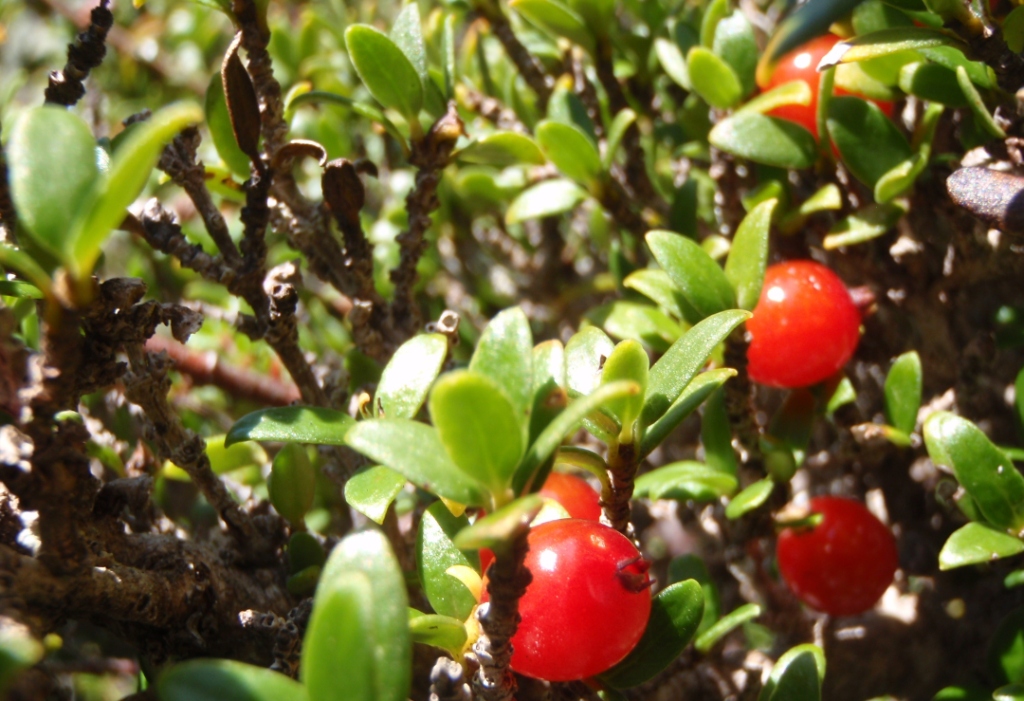Scientific Name: Coprosma nitida
Common Name: mountain currant
Family Classification (Clade): Eudicots
Family: Rubiaceae
Form Description: Much-branched shrub, often erect.
Height (m): 1 – 2.5
Flowers: Solitary flowers with small petals. Male and female on different plants.
Fruit: Drupe – shiny, pale orange-red when ripe.
Municipality
Plant Communities
Habitat Notes
Common throughout the state in alpine and sub-alpine eucalypt forests on slopes of mountains.
Site Tolerance
Dry, Exposed, Moist, Rocky, Windy
Soil Tolerance
Clay, Fertile, Loam, Well-drained
Frost Tolerance
Hardy
General Notes
Grows on dolerite-derived clay. Resistant to Phytophthora cinnamomi.
Propagation Calendar
-
Flowering Month
Jan Feb Mar Apr May Jun Jul Aug Sep Oct Nov Dec -
Seed Collecting Month
Jan Feb Mar Apr May Jun Jul Aug Sep Oct Nov Dec -
Sowing Month
Jan Feb Mar Apr May Jun Jul Aug Sep Oct Nov Dec -
Cutting Month
Jan Feb Mar Apr May Jun Jul Aug Sep Oct Nov Dec
Propagation Method
Seed Information
Seed Collection
Harvest by hand and place into bags, or knock fruit onto ground sheets.
Seed Treatment Method
Fermentation Collect fleshy fruits in a plastic bag, mash up and allowed to ferment to replicate digestion by a bird.
Seed Treatment Notes
Place fruits into plastic bags and allow to ferment for several weeks. Remove the flesh from the fruit and sow seed soon after collection. Do not allow the seed to dry out.
Cutting & Division Information
Can be grown from cuttings.

